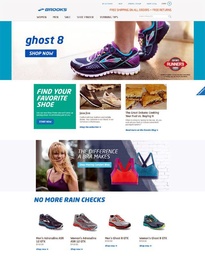Abstract
Brooks’ mission is to inspire everyone to run and be active by creating innovative gear that keeps them running longer, farther and faster. Beginning as a small athletic shoe company in 1914, Brooks Sports has endured growths and declines in over a century of operations. Nearly bankrupt at the turn of the century, Brooks has finally found a niche strategy to compete in the athletic market. Under the direction of CEO Jim Weber and a subsidiary of Warren Buffet’s Berkshire Hathaway, Brooks Sports focuses its operations entirely on runners. What was once a diversified and disorganized company through owner turnover, differing strategies and an unclear identity, Brooks evolved from a brand that was generating $65 million in 2001 and on the brink of bankruptcy, to generating over $500 million of annual sales in 2014 through strong leadership and a focused strategy. Weber and his team have set its sights on becoming a $1 billion brand by 2020 and generate $1.5 billion by early next decade. Will Brooks’ runner focused strategy carry the company to its $1 billion sales goal by 2020, or will Brooks be forced to shift to a diversified approach as the running market becomes more crowded?
Detailed information
| Case ID | 15-1055 |
|---|---|
| Published | 2015 |
| Industry | RUBBER AND PLASTIC FOOTWEAR AND ITS FINDINGS |
| Analyzed Area | Marketing |
| Pages | 40 |
| Language | English |
| Teaching Note | Attached |

 Brochure
Brochure
 Info Session
Info Session
 Application
Application
 Alumni Voices
Alumni Voices





